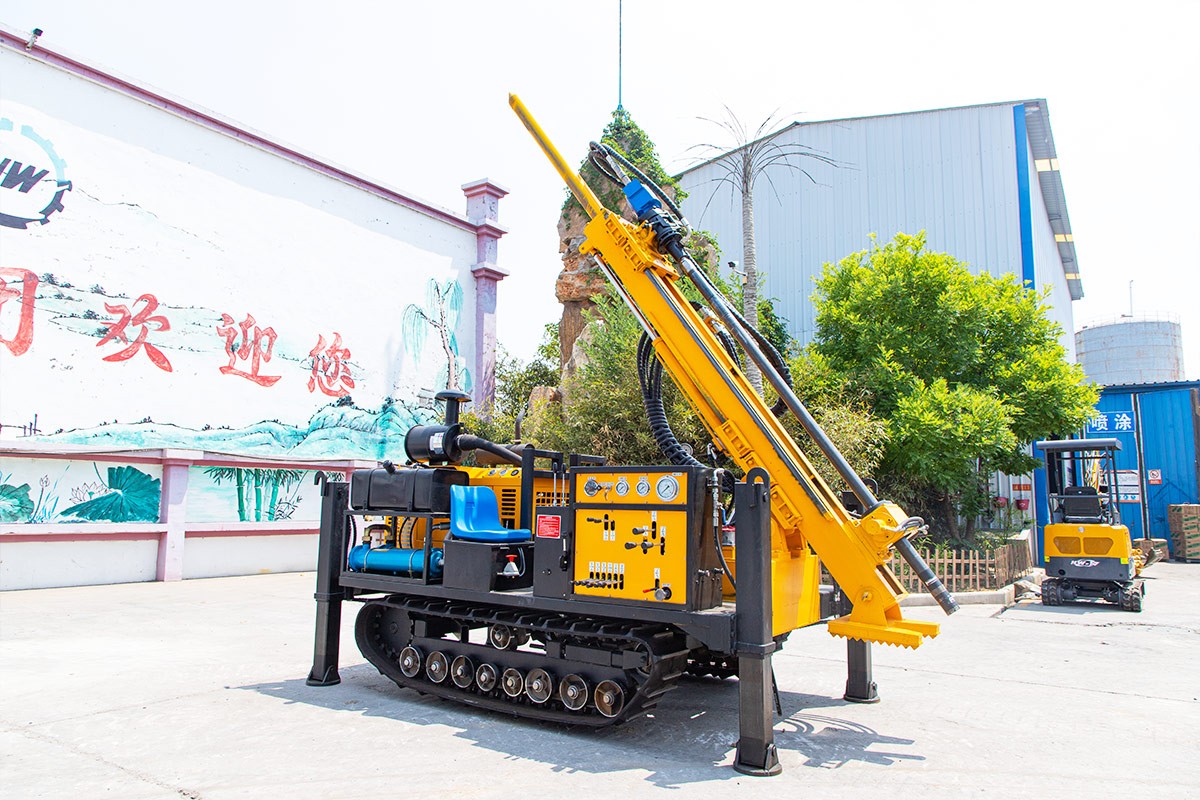The fuel tanks on construction machinery are tall and bulky, and it is impossible to remove them frequently for cleaning. However, for some construction machinery, such as rotary drilling rigs, the cleanliness of diesel oil is very strict. Many operators have to remove the stored oil in the oil tank, add clean diesel oil, and then turn on the oil release switch until the outflowing diesel oil is no longer in the oil. Bring booty so far. It is wasteful to clean the fuel tank in this way, and it cannot clean the attachments on the inner wall of the fuel tank. For this reason, we recommend making a nozzle for cleaning the fuel tank with compressed air. The nozzle is a thin steel pipe with a length of 1m, the bottom is blocked with an end, and several small holes with a diameter of 1mm are drilled around the lower end. With this nozzle, the inside of the fuel tank can be flushed out in a few minutes without having to remove the fuel tank.

1. Cleaning method
(1) After turning on the oil drain switch of the fuel tank and storing the oil, turn off the oil drain switch and the fuel supply switch at the same time, remove the fuel tank cover, oil filter screen and oil dipstick, and inject 20~40L of clean diesel oil into the fuel tank for cleaning Use oil (depending on the size of the fuel tank).
(2) Connect the air pump hose to the nozzle and put the lower part of the nozzle deep into the bottom of the fuel tank. When the air pressure of the air pump air cylinder rises to 0.6-0.7MPa, open the gate valve and let the high-speed airflow rush into the bottom oil layer of the fuel tank from the nozzle hole, so that the diesel oil is stirred and splashed, and the interior of the fuel tank is washed clean. During the cleaning process, the air pressure of the air reservoir should be kept at 0.4-0.5MPa. In order to prevent the oil mist from spraying out of the fuel tank, it is advisable to block the fuel tank port with gauze, so as not to affect the left and right swing of the nozzle.
(3) Close the gate valve of the air reservoir, take out the nozzle, drain the cleaning oil in the fuel tank, add 15-30L of clean diesel oil, and clean it again according to the above method. After cleaning, release the cleaning oil, install the oil filter, oil dipstick and fuel tank cover, so far the cleaning of the fuel tank is completed. The released cleaning oil can be used to clean other oil tanks or parts after being precipitated.
The above cleaning method can only be used for diesel tanks, not for gasoline tanks. Because the friction between the compressed air and the tank wall can generate static electricity, and gasoline is flammable and explosive, even in the severe cold conditions of -30 ℃, a tiny spark will ignite the gasoline, causing a safety accident.
2. Precautions for cleaning diesel fuel tanks of core drilling rigs, water well drilling rigs and other drilling rigs:
(1) Diesel should settle for more than 48 hours before being added to the fuel tank.
(2) Before each shift, the oil drain switch of the fuel tank should be turned on to discharge the sediment at the bottom of the tank.
(3) Pay attention to the amount of oil stored in the fuel tank during the operation, so as to avoid the exhaustion of the stored oil and the air entering the fuel system, which will affect the normal operation of the machine.
(4) Diesel oil should be filled up after work every day, so as to prevent the water droplets generated by condensation on the inner wall of the empty fuel tank from sinking into the diesel oil and causing premature corrosion of the precise parts of the fuel system.
(5) The vent hole of the fuel tank cover should be dredged frequently to avoid negative pressure in the fuel tank, reduce the oil delivery pressure, reduce the fuel supply, and cause the machine power to drop or run unstable.